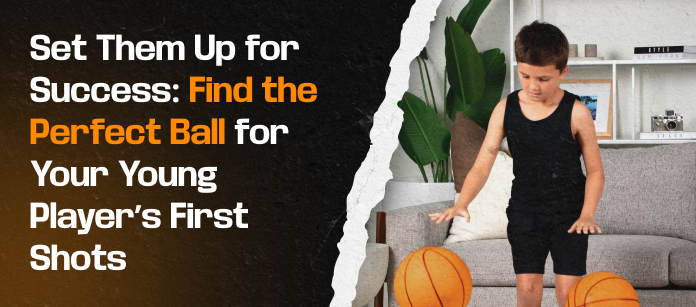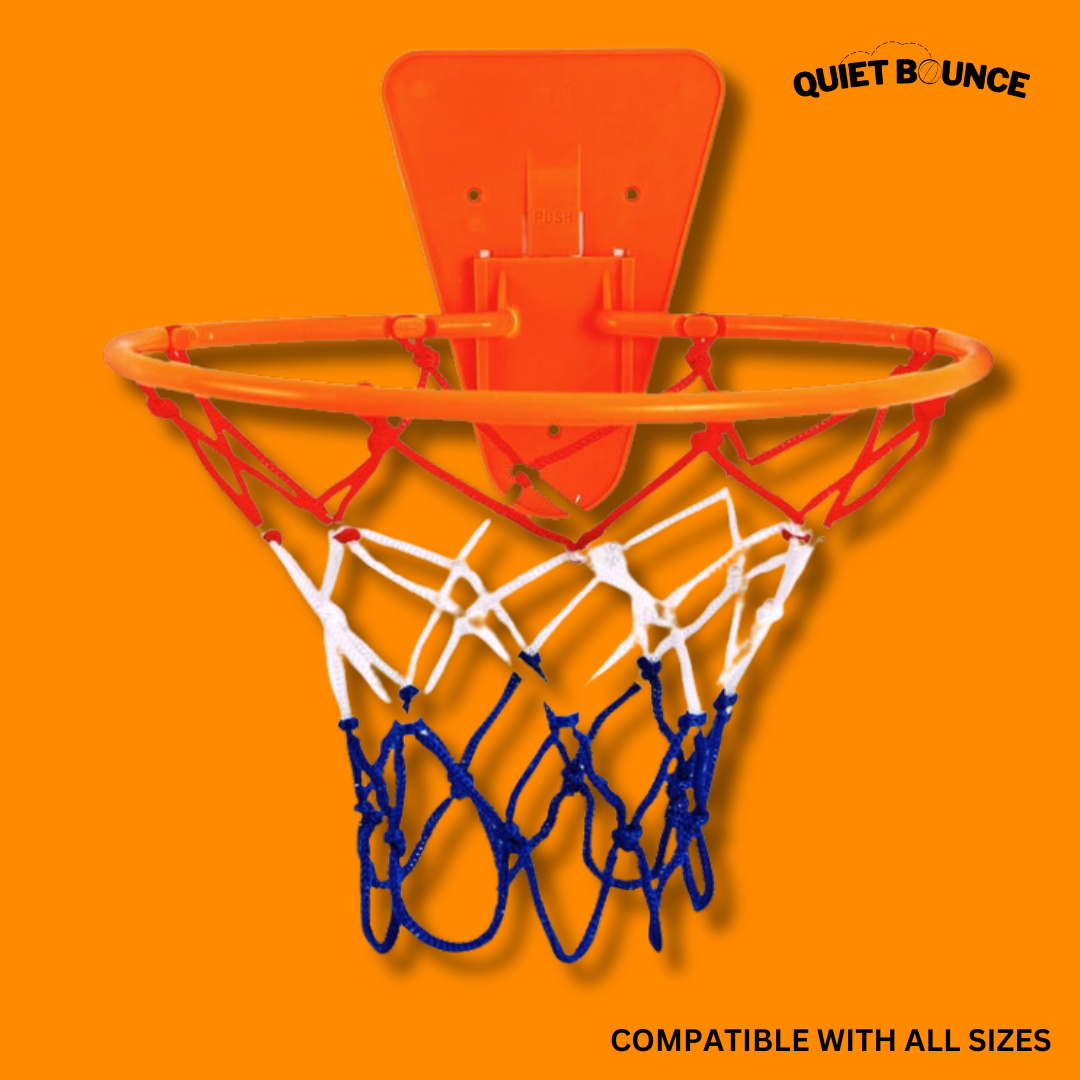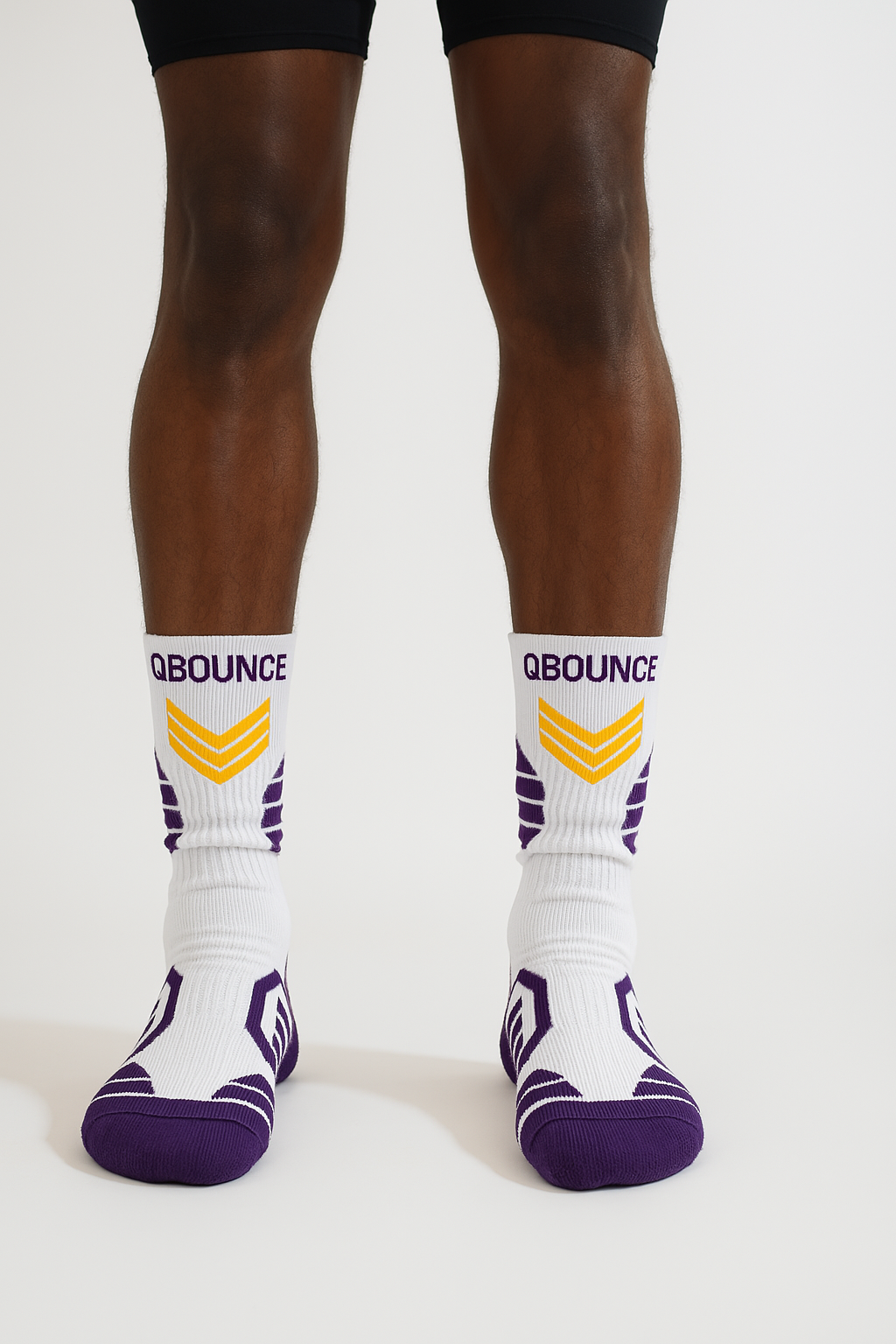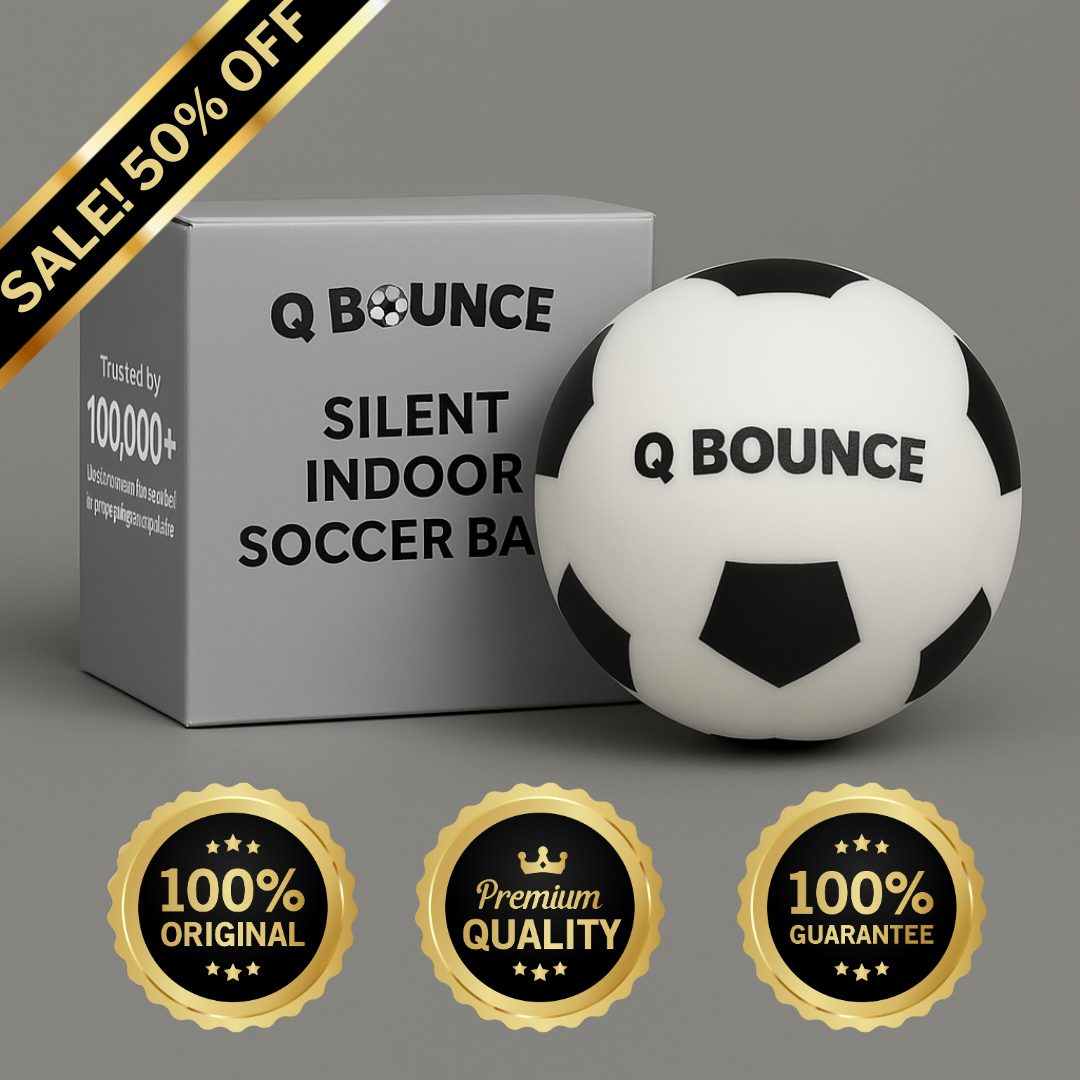
What Size Basketball for 1st Grade: Finding the Perfect Fit for Young Players
Share
Consider this eye-opening fact: a men's regulation basketball weighs more than twice as much as the smallest youth basketball. Imagine trying to teach proper shooting form to a child struggling with equipment that's proportionally heavier than what adult players use. The right basketball size for your 1st grader directly impacts their shooting form, dribbling control, and most importantly, their love for the game.
While many experts recommend a Size 5 (27.5") basketball for kids in 1st through 3rd grade, some sources suggest that a smaller Size 4 (25.5") might work better for younger or smaller children ages 5-8. The right-sized ball makes it easier for beginners to learn solid form and technique, giving them a great foundation for basketball success.
We’re about to explore how to choose the perfect ball for your child's age and skill level, understand how different sizes affect development, and answer the most common questions parents ask about basketball sizes by age.
Understanding Basketball Sizes
Basketball size variations follow a precise system designed to match players' physical capabilities at different stages of development.
Understanding these differences helps you make informed decisions about your child's equipment, especially when determining what size basketball for 1st grade players works best.
Overview of Standard Basketball Sizes
Basketball sizes follow standardized measurements that correspond to specific age groups and playing levels.
The official sizing system ranges from Size 3 (mini) to Size 7 (official men's size), with each increment representing significant changes in both circumference and weight.
Here's a breakdown of the standard basketball sizes by age groups:
|
Boyut |
Circumference |
Weight |
Recommended Ages |
|
3 (Mini) |
22.5" |
10 oz |
Ages 4 and under |
|
4 |
25.5" |
14 oz |
Ages 7 and under |
|
5 |
27.5" |
16-18 oz |
Ages 8-9 |
|
6 |
28.5" |
18-20 oz |
Ages 9-12 (boys), 9+ (women) |
|
7 |
29.5" |
20-22 oz |
Ages 12+ (men) |
The difference between the smallest and largest basketballs is huge. A Size 7 men's basketball weighs more than twice as much as a Size 3 mini ball. Each jump in size adds about 1-2 inches in circumference and several ounces in weight - changes that significantly impact a young player's ability to handle the ball effectively.
Why Size and Weight Matter for Young Players
The relationship between basketball sizes by age and skill development runs deeper than most parents realize.
Think about this: a 23-foot shot with a regulation men’s basketball takes real strength and technique, even for a full-grown adult man. Expecting a small child to handle an oversized ball sets them up for failure and frustration.
When young players use basketballs that are too large or heavy, several problems emerge:
-
Poor shooting mechanics: Children compensate by using their shoulders to "chuck" the ball rather than developing proper form.
-
Difficulty controlling the ball: Heavier balls are harder to catch, dribble, and pass accurately.
-
Reduced enjoyment: Struggling with oversized equipment can lead to disinterest.
Basketball for 7 year old players should be lightweight enough that they can shoot with decent form from 6-7 feet away.
Silent basketballs also follow these size and weight principles. They might vary slightly in weight because of noise-reducing materials, but they’re designed to mimic the feel and performance of standard balls.
For younger players, a Size 5 silent basketball (27.5" circumference) is ideal - it’s light enough for kids to handle while keeping noise to a minimum during indoor practice. For older players or those looking to build extra strength and ball control, the Size 7 silent basketball (29.5" circumference) offers the same dimensions as regulation men’s basketballs, making it an excellent training option.
As your child grows, their equipment needs will evolve accordingly. Starting with the right foundation makes all the difference in their basketball journey.

Recommended Basketball Size for 1st Graders
Starting basketball in 1st grade means learning the basics with a ball they can actually handle. Let's explore the ideal basketball sizes by age for these budding athletes.
Ideal Basketball Size for 1st Grade (Ages 6-7)
When researching what size basketball for 1st grade players is best, you’ll find several different recommendations. The most common suggestion is a Size 4 basketball, which measures 25.5" in circumference and weighs approximately 14 ounces. This size is generally recommended for children ages 5-8 years old.
However, some basketball organizations recommend a Size 5 basketball (27.5" circumference) for 1st graders. This slight discrepancy exists because children develop at different rates, and some organizations group 1st-3rd graders together.
The consensus among experts remains clear: using a basketball that's too large or heavy often leads to poor shooting habits that can persist for years.
Comparison with Other Age Groups
Even just a couple of years of growth can make a huge difference in what ball feels right for a child, which is why parents often wonder what size basketball for 1st grade kids is the best fit compared to older age groups.
While 1st graders often start with a Size 4, older kids gradually move up to larger basketballs as their skills and physical abilities improve.
Let’s look at how ball size recommendations shift for players ages 7, 8, and into the pre-teen years.
Basketball for 7 Year Olds: What to Choose
For a 7-year-old player, you have two main options:
-
Size 4 (25.5") - Weighing 14 ounces, this smaller ball is ideal if your child has smaller hands or is new to basketball.
-
Size 5 (27.5") - At 17 ounces, this slightly larger ball might be better for 7-year-olds who have some experience or are larger for their age.
The most important consideration isn't just age but your child's individual development.
It comes down to whether they can grip, shoot, and control the ball comfortably and confidently.
Basketball for 8 Year Olds: Is It the Same?
The transition from 7 to 8 years old often marks when many children should move from Size 4 to Size 5, though this depends on individual development. Using the appropriate size helps prevent bad habits from forming during this crucial developmental period.
Basketball for 11 Year Olds: How It Differs
As children approach middle school, they'll transition to even larger balls. Boys typically move to a Size 6 (28.5") at ages 9-12 and eventually to the full-sized men's ball (Size 7, 29.5") at age 12+. Girls generally continue using the Size 6 ball throughout high school and beyond.
Benefits of Using the Right Basketball Size
As you wouldn’t hand a young pianist a full-sized piano when they’re just starting out, you also wouldn’t give a young basketball player a ball that’s too big. The right size makes all the difference - it fundamentally shapes how young athletes master the game's core skills.
Supports Proper Shooting Form and Technique
Research shows that when young players struggle with basketballs that are too large or heavy, they compensate by using their shoulders to "chuck" or "fling" the ball instead of developing correct shooting form.
A ball that fits their hands and strength allows kids to practice proper shooting mechanics: keeping their elbow in, using their wrist for follow-through, and generating power from their legs instead of just their upper body.
Over time, these habits build muscle memory, helping young players shoot accurately and consistently as they grow stronger.
Improves Dribbling and Passing Skills
Dribbling skills flourish with appropriate equipment. A properly sized basketball lets young players keep the ball lower to the ground and under control, helping them maintain their dribble.
When the ball is oversized, it bounces higher, feels heavier, and becomes much harder for small hands to manage, leading to frequent fumbles and frustration.
Passing is also affected. Kids using a ball that’s too large often push the ball with two hands or sling it awkwardly because they lack the hand strength and grip to pass with precision. The right ball size makes it easier for them to practice crisp, accurate passes and learn proper technique early on.
Builds Confidence and Encourages Practice
Using the right basketball size does more than help kids handle the ball - it boosts their confidence every time they play.

When young players feel in control, they’re more likely to practice, improve, and stay excited about the game. Confidence on the court starts with equipment they can actually manage.
Common Questions About Basketball Sizes
Think about the last time you stood in a sporting goods store, staring at rows of basketballs while your 1st grader tugged at your sleeve. Almost all parents have the same questions when picking equipment for young players. Let’s tackle the most common ones.
What Size Basketball Do Middle Schools Use?
Middle school represents a significant jump in basketball equipment. Here's what most programs use:
-
Boys (12+): Size 7 basketball (29.5" circumference, 20-22 ounces)
-
Girls (middle school age): Size 6 basketball (28.5" circumference, 18-20 ounces)
The Size 6 ball serves as a bridge between youth basketballs and the full-sized men's ball. For middle school boys, this intermediate step helps develop proper technique before moving to the regulation Size 7 (29.5"). Girls continue using the Size 6 ball throughout high school and even at professional levels, as this is the official women's basketball size.
Can My Child Use a Bigger Ball to 'Grow Into It'?
This question comes up constantly, and the answer might surprise you. Using a larger basketball for young players to "grow into" is strongly discouraged by basketball development experts.
Instead of planning for the future, choose a ball that fits your child’s current size and strength. Growth will come, and when it does, you can move them up to the next size while keeping the skills they’ve already built.
Is Weight More Important Than Size?
When choosing a basketball for young players, size and weight work together rather than one being more important than the other. A ball that’s too large makes it difficult for small hands to grip and control, while a ball that’s too heavy can tire kids out quickly.
Tips for Parents and Coaches
You know the numbers, but choosing the right basketball for your kid is also about comfort and confidence. And if you’re still unsure what size basketball for 1st grade is right, here are some tips to help.
How to Test If a Ball Is the Right Size
There’s more to picking a basketball than just looking at the size label.
Watch how your child handles the ball during these simple assessments:
-
Grip test: Your child should be able to hold the ball with fingertips, not gripping it with their palms.
-
Shooting comfort: Watch their form - if they’re twisting or straining to shoot, the ball might be too big.
-
Dribbling control: They should be able to keep the ball under control rather than having it bounce too high, too low, or wildly in random directions.
Don't forget to check the inflation (this step gets overlooked more often than you'd think). Insert a pressure gauge into the valve for an accurate reading in pounds per square inch. A properly inflated basketball bounces consistently and provides better grip for developing hands.
How to Encourage Proper Technique at Home
Once you've found the right basketball for your 7-year-old, establishing proper technique becomes your next priority.
Remember these fundamentals as you practice together:
-
Start with fingertip control in dribbling - the ball should not "slap" the hand but hit the ground.
-
Keep eyes up while dribbling - fix gaze on something in front of them off the ground.
-
Teach two-handed passing with proper hand positioning on the sides of the ball.
-
For shooting, emphasize that both hands start on the ball but release with one.
Most importantly, maintain a fun atmosphere during practice.
Conclusion
Basketball equipment should grow with your child. What works perfectly for your 1st grader today will eventually need upgrading as they develop more strength and coordination. The key is choosing equipment that’s challenging enough to help them improve but still manageable so they can practice proper technique.
Consider your practice environment when selecting equipment. Quiet basketballs designed for indoor use can turn any space into a training area, allowing your young player to practice daily. This consistent at-home training builds fundamental skills through repetition and keeps the passion alive.
So get out there, find the right ball for your young athlete, and watch them develop into the player they're meant to become. The journey starts with the right equipment, but it's fueled by patience and lots of encouragement along the way.
Frequently Asked Questions
-
What size basketball is recommended for 1st grade players?
For 1st graders (typically ages 6-7), a Size 4 or Size 5 basketball is recommended. Size 4 basketballs measure 25.5" in circumference and weigh about 14 ounces, while Size 5 basketballs are 27.5" in circumference and weigh around 16-18 ounces. The choice between these sizes depends on the child's individual development and hand size.
-
How does using the right size basketball affect skill development?
Using the right-sized basketball is crucial for proper skill development. It allows young players to develop correct shooting form, improve dribbling control, and enhance passing accuracy. Smaller, lighter basketballs enable children to grip and control the ball effectively, leading to better technique and increased confidence.
-
Can my child use a larger basketball to ‘grow into it’?
It's not recommended to use a larger basketball for young players to "grow into it." Using an oversized ball often leads to poor technique and bad habits that can be difficult to correct later. It's better to use the appropriate size for your child's current age and physical development.
-
What size basketball do middle schools use?
Middle school basketball players typically use a full-size men's ball (Size 7, 29.5" circumference). Girls continue to use the Size 6 ball throughout high school and beyond.
-
How can I tell if a basketball is the right size for my child?
To test if a basketball is the right size, watch how your child handles it. They should grip the ball comfortably with their fingertips, keep control while dribbling, and shoot using proper form rather than changing their motion just to get the ball to the hoop. If your child struggles with these basics, the ball might be too large or heavy for them.




